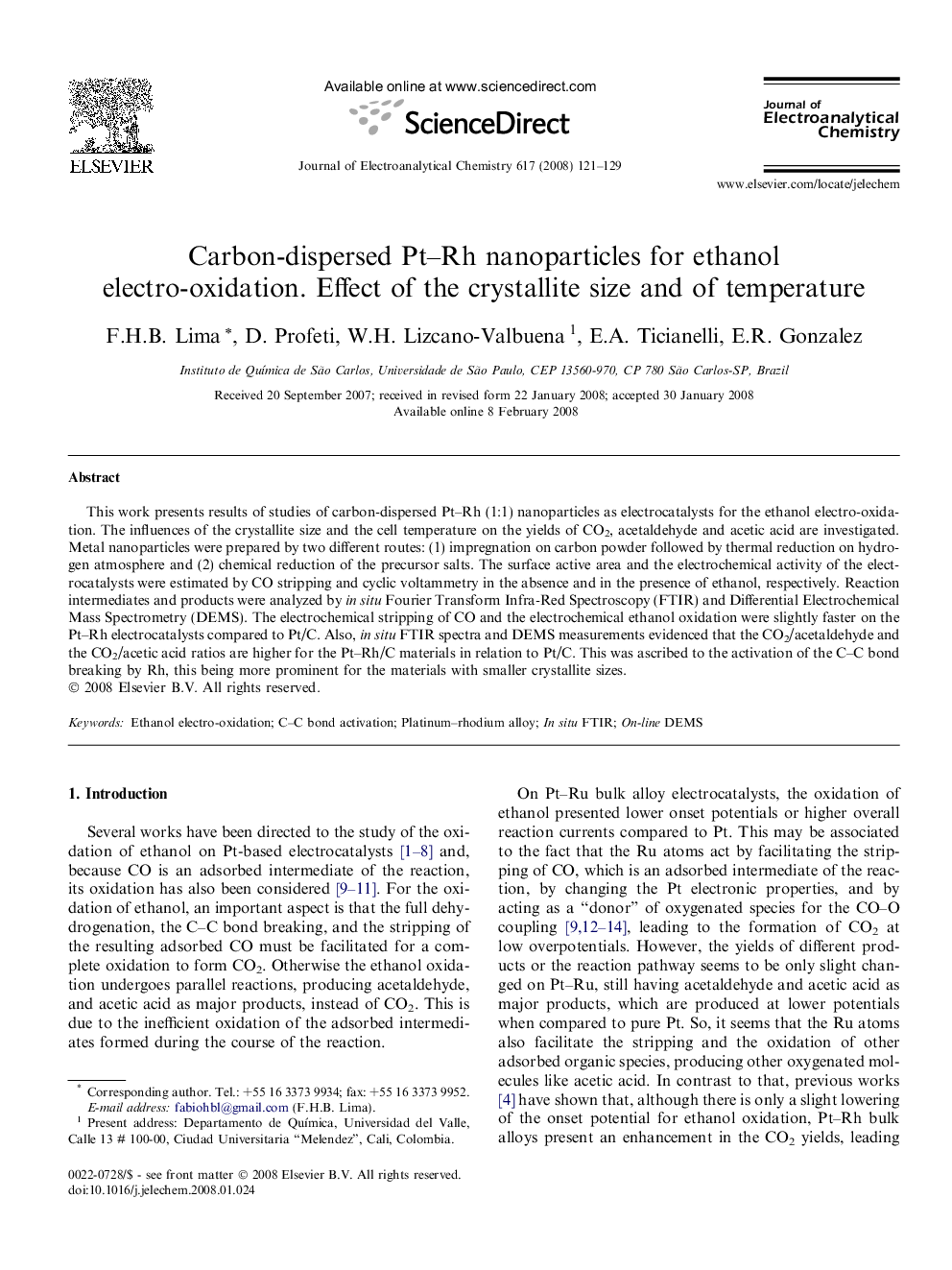| Article ID | Journal | Published Year | Pages | File Type |
|---|---|---|---|---|
| 220603 | Journal of Electroanalytical Chemistry | 2008 | 9 Pages |
This work presents results of studies of carbon-dispersed Pt–Rh (1:1) nanoparticles as electrocatalysts for the ethanol electro-oxidation. The influences of the crystallite size and the cell temperature on the yields of CO2, acetaldehyde and acetic acid are investigated. Metal nanoparticles were prepared by two different routes: (1) impregnation on carbon powder followed by thermal reduction on hydrogen atmosphere and (2) chemical reduction of the precursor salts. The surface active area and the electrochemical activity of the electrocatalysts were estimated by CO stripping and cyclic voltammetry in the absence and in the presence of ethanol, respectively. Reaction intermediates and products were analyzed by in situ Fourier Transform Infra-Red Spectroscopy (FTIR) and Differential Electrochemical Mass Spectrometry (DEMS). The electrochemical stripping of CO and the electrochemical ethanol oxidation were slightly faster on the Pt–Rh electrocatalysts compared to Pt/C. Also, in situ FTIR spectra and DEMS measurements evidenced that the CO2/acetaldehyde and the CO2/acetic acid ratios are higher for the Pt–Rh/C materials in relation to Pt/C. This was ascribed to the activation of the C–C bond breaking by Rh, this being more prominent for the materials with smaller crystallite sizes.
